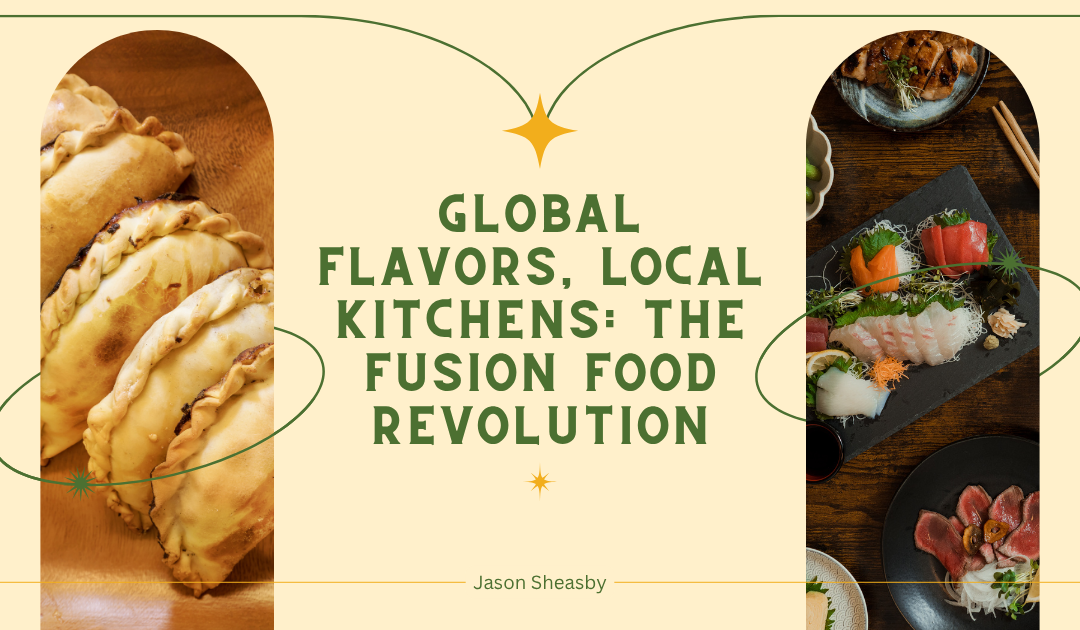In today’s culinary landscape, borders are blurring, traditions are merging, and the result is a vibrant revolution on our plates. Fusion food, once a niche novelty, has evolved into a mainstream movement that’s redefining how we cook, eat, and experience culture. With global travel, social media, and a growing curiosity about different cuisines, home cooks and professional chefs alike are embracing a world of flavor right from their own kitchens.
Fusion food is not about diluting culinary identities—it’s about celebrating them. It’s the art of blending cooking techniques, ingredients, and flavor profiles from different cultures to create something entirely new yet deeply familiar. Think Korean tacos, butter chicken pizza, or ramen burgers. These dishes may raise eyebrows at first glance, but they reflect a deep appreciation for culinary diversity and innovation. More importantly, they invite experimentation and storytelling, connecting people through taste and texture in unexpected ways.
At the heart of this trend is accessibility. The internet has placed the world’s recipes at our fingertips, and local markets now stock ingredients once considered exotic. A home cook in Mumbai can easily find miso paste or gochujang, just as someone in New York might be whipping up an Indian-style curry with paneer and garam masala. This availability has encouraged people to step out of their comfort zones and integrate global ingredients into their daily cooking.
Social media platforms like Instagram, TikTok, and YouTube have played a significant role in accelerating the fusion food trend. Food influencers, travel bloggers, and home chefs regularly showcase dishes that merge flavors across continents. Viral videos demonstrating how to make sushi burritos or spicy mango guacamole inspire others to experiment, creating a ripple effect of creativity. What used to be considered daring combinations are now normalized, and curiosity has replaced skepticism.
Fusion cuisine is also a reflection of cultural intersections. In multicultural cities and households, blending food traditions often comes naturally. A family with roots in different parts of the world may naturally cook meals that draw from each culture, whether intentionally or through generational evolution. Children growing up in such households often inherit a palate that embraces variety—from soy sauce to salsa, turmeric to tahini. These influences become second nature, leading to organic fusion recipes that are as personal as they are delicious.
Restaurants, too, are responding to the demand for inventive global blends. Menus now proudly feature dishes like Thai-inspired spaghetti, Moroccan tacos, or Indian-style nachos. This isn’t just about standing out—it’s about offering inclusive flavors that resonate with diverse communities. Fusion food invites everyone to see their culture represented in new ways, and diners appreciate the sense of familiarity mixed with surprise.
However, the fusion food revolution is not without its critics. Some argue that it can lead to cultural appropriation or the oversimplification of traditional dishes. The key here is respect—honoring the origins of ingredients and techniques while being transparent about the inspirations behind a dish. True fusion cuisine doesn’t erase identity; it pays homage through thoughtful combinations and storytelling. When done with cultural sensitivity, fusion becomes a bridge between worlds, not a barrier.
As we continue to explore the global pantry from the comfort of our own kitchens, the possibilities are limitless. A simple stir-fry might get a West African twist with the addition of peanut sauce. A traditional lasagna could take on Middle Eastern flair with layers of spiced lamb and sumac. These combinations aren’t just trendy—they’re reflective of a world that’s becoming more connected, open-minded, and eager to learn through food.
The fusion food movement is more than a culinary experiment—it’s a symbol of cultural exchange, innovation, and shared humanity. Whether you’re a seasoned chef or a curious home cook, there’s never been a better time to mix things up and explore the richness of global flavors. So go ahead—grab that soy sauce and spice rack, and create something deliciously unexpected.

